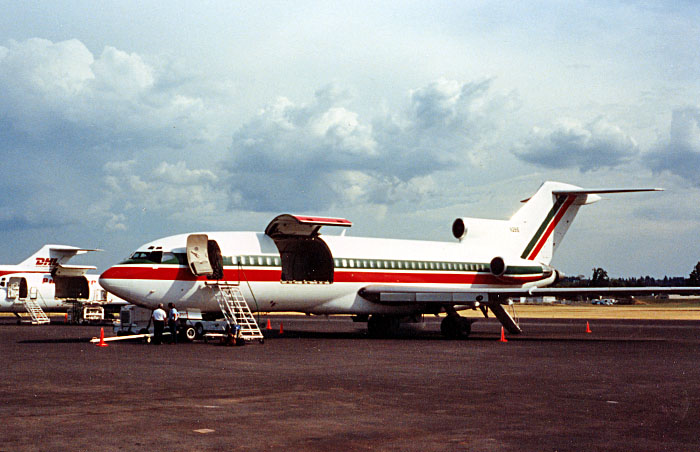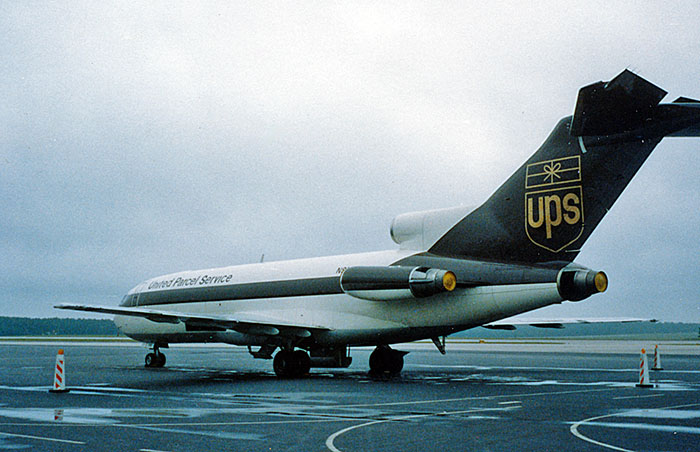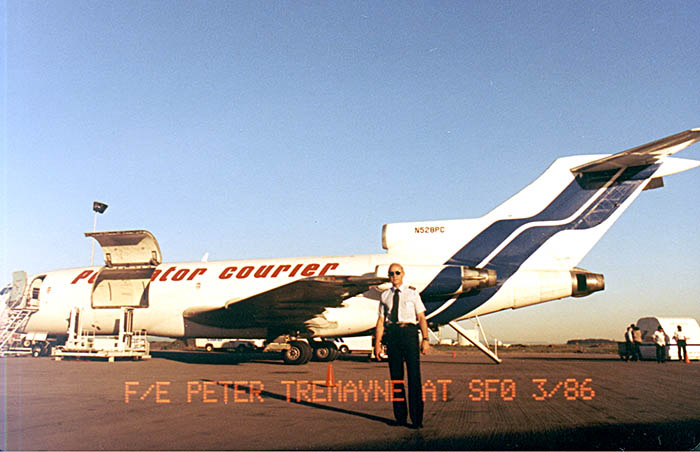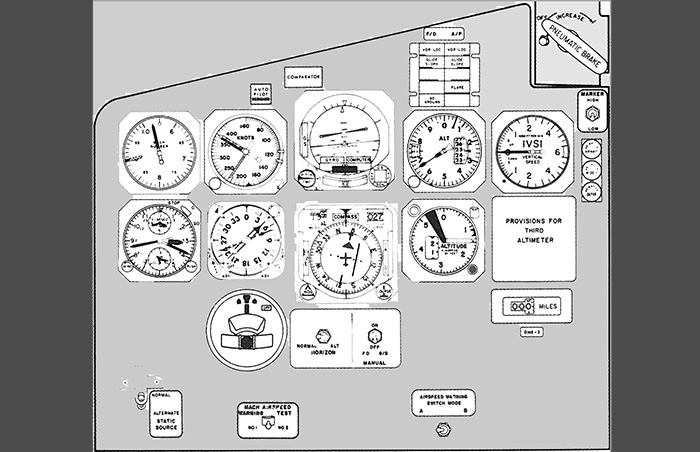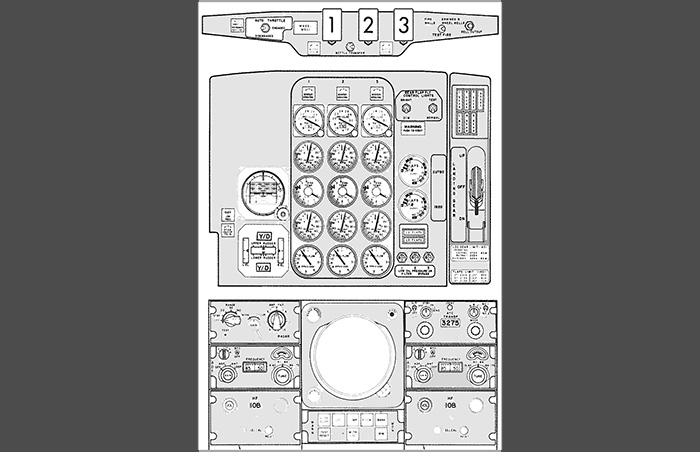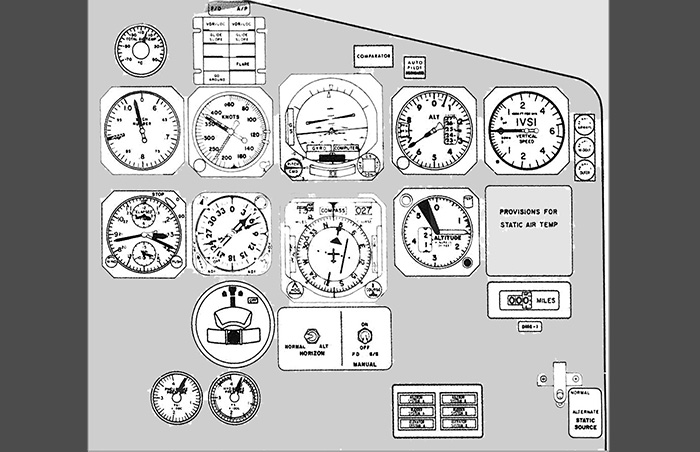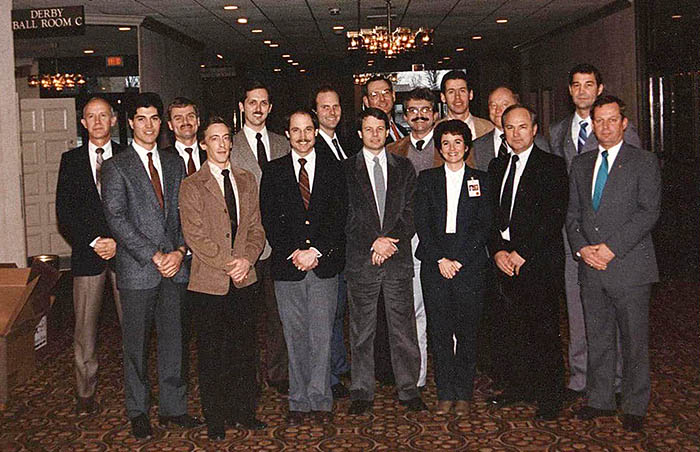Flying the B-727 with Orion Air
If it's not a Boeing, I'm not going!
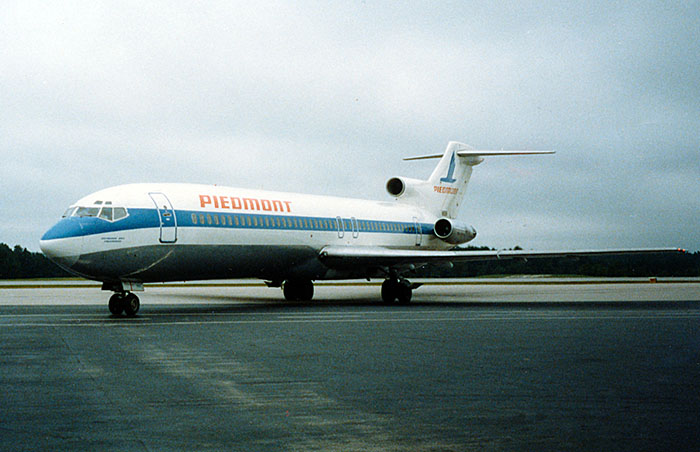 |
 |
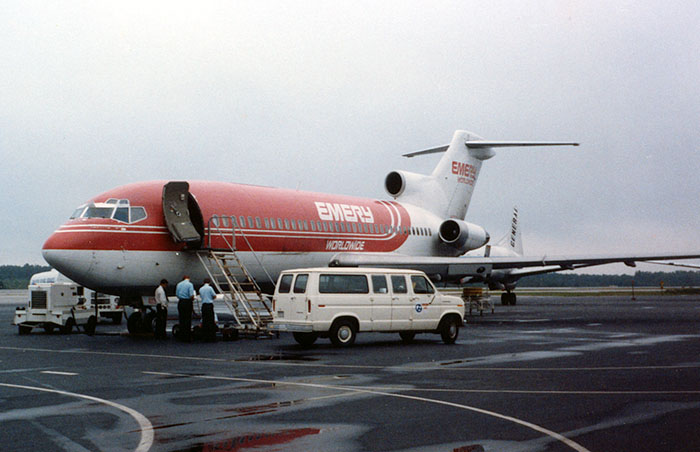 |
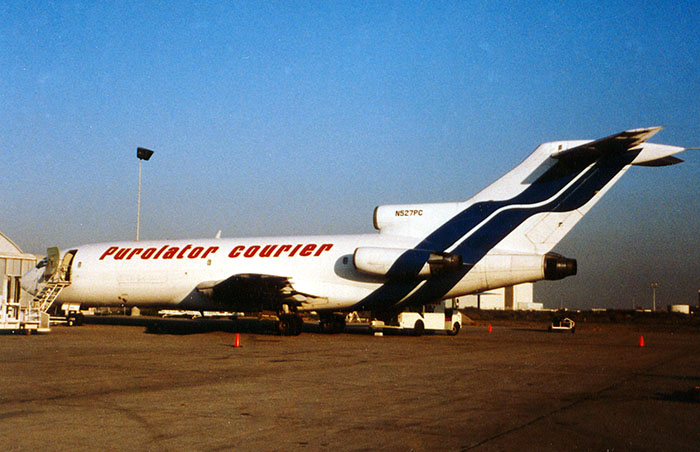 |
 |
 |
The front seats in the B-727 cockpit. |
The Engineer's panel in the B-727 |
The Night-Freight DogsFor me, working for Orion Air was about flying B727's in the middle of the night ... in all weathers, throughout the Lower 48 States of the USA. Within two years of flying for Orion, I'd qualified in all seats: Flight Engineer, First Officer and Captain, plus as a Flight Engineer Simulator Instructor and Check Airman. Orion Air was based in Raleigh, NC providing pilots and maintenance personnel for airfreight carriers such as United Parcel Service, Emery, Purolator Courier and others, operating B747's, B727's, DC8's and DC9's. I was initially hired as a B727 Flight Engineer, beginning training in July, 1985 with Piedmont Airlines, based out of Winston-Salem. On completion, I was assigned to Louisville, Kentucky for flight operations in United Parcel Service airplanes. |
Flying With the Glorious MisfitsDuring the two and half years I spent with Orion Air, belonging to this gang of misfits that knew how to fly airplanes with such skill and élan was a privilege and honor. The constant night operations, particularly in winter, were always challenging, and many of the airports we flew into lacked nighttime local Control. Therefore no information on current runway surface conditions, including snow cover and braking effectiveness. Our pilots were excellent at handling these potentially hazardous operating conditions, despite being treated by passenger-carrier pilots as not good enough to fly for the major airlines. Obviously, they thought we lacked the square jaw, straight teeth, crooked smile, and in many cases, the right College Degree … if any? The crewmembers of Orion Air from 1985 to 1987 were an eclectic group, made up of ex-military pilots: US Air Force , US Navy and Marine aviators, US Army, a few RAF, and one RNZAF (me). Except for the RAF guys, most were veterans of Vietnam, which was a definite plus, and possibly one of the reasons I was hired? The non-military pilots included a large group of younger men and women from US Commuter airlines, scud-running night freight operators, and corporate pilots. There was also a small group of internationals: Norwegians, Swedish, Iranians, British, Afghans, a Pakistani, a Vietnamese, and me. All pilots hired at Orion for the B-727's, B-747's, or DC-8's fleets were initially assigned Flight Engineer positions and placed at the bottom of seniority lists. It didn't matter whether you'd been in the military flying SR-71's, F-117's, B-52's, or Air Force One. You began as a Bog-Rat Engineer in the backseat. One exception to this rule was a small group of pilots flying two-seat crewed DC-9's for Purolator Courier based out of Indianapolis. The other exception was the surprise introduction of previously qualified B-727 Captains inserted into our ranks in early 1987. They'd been hired off the street and positioned out of seniority to meet an immediate pilot shortage because of new contracts with Flying Tigers DC-8's and Consolidated Freights B-727's. We had no Union representation at Orion, but Management tried to placate full-time crewmembers with the promise of upgrading First Officers like me within six months, at a time when they expected to have the manpower to do the training. It was disappointing for this to happen, but it was either resign or go with the flow, and as a First Officer and FE Simulator Instructor, I was now earning close to $40,000 annually, enough for our family to survive in rural Kentucky. In the event, I did get the upgrade to Captain at the end of six months and had my annual pay rise to $55,000, a princely sum compared with what I'd expected back in 1985. In the meantime, as a First Officer, I had the pleasure of flying with a small number of these temporary Captains, who definitely belonged in the misfit category. Most had been strikers at Continental Airlines in 1983, a strike that ultimately failed because many "Scab" Continental pilots and new hires crossed the picket lines. These strikers had the integrity to not give in to Continental's new Management, moonlighting with different airlines like Orion to stay current and financially viable. The Captains I flew with had the common courtesy to understand their intrusion into full-time Orion pilots' upward mobility. Personally, I gained valuable experience and knowledge from these old-hand airline pilots, providing assurance that my future flying in the USA and International skies would be highly professional. My number one pilot from this group was Jim, tall, very fit, jogged faster than me, and five years my senior. Jim was ex-US Navy, had flown F-8 Crusaders off Carriers during the Vietnam war, a background that placed him in hero status for me. As an unofficial tutor, Jim showed me so much more than his expertise in flying the B-727. He provided arcane information on how the Interstates were numbered and how to understand the mileage markers along the side. In-flight, on clear nights, I learned where to find Polaris and other notable northern hemisphere stars and explained why our radar would indicate strange patterns in the ground mapping mode over the plains in the Midwest. In Portland, Oregon, he introduced me to the pleasures of eating Cinnabon fat-pills at the Malls, and fresh strawberry frappes for breakfast at Denny's restaurants. Then in the evenings, it was Baked Alaskan Halibut and King Salmon, washed down with draught Alaskan Amber beer. In Philadelphia, it was how to find the best Philly Cheese Hoagies, washed down with Rolling Rock beer. The really important stuff I learned from Jim was how to maximize income in the United States, the primary logic being: It's not how much you earn, it's how much you get to keep. That was and still is, finding ways to minimize the amount of Federal and State tax we paid. As I discovered, one solution to that problem was very close to Portland by residing in Vancouver, Washington (no State Income Tax!) immediately across the Columbia River, and using Portland airport for jump-seating to work in Louisville, Kentucky. This was an option I ultimately chose in 1995.
Copyright©2020 Peter Tremayne, Reno NV
|
Back to Top




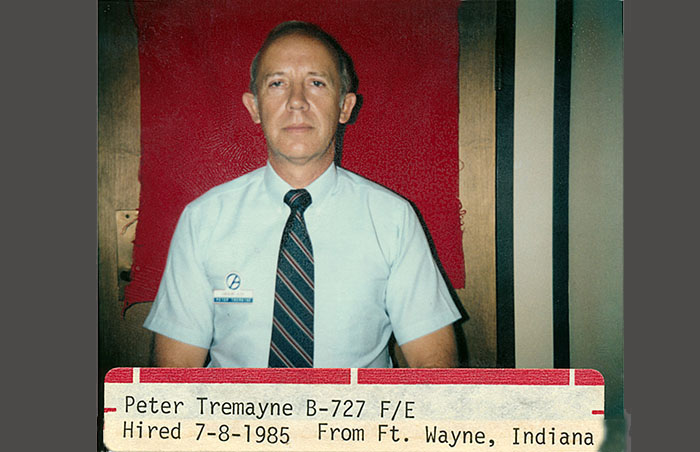
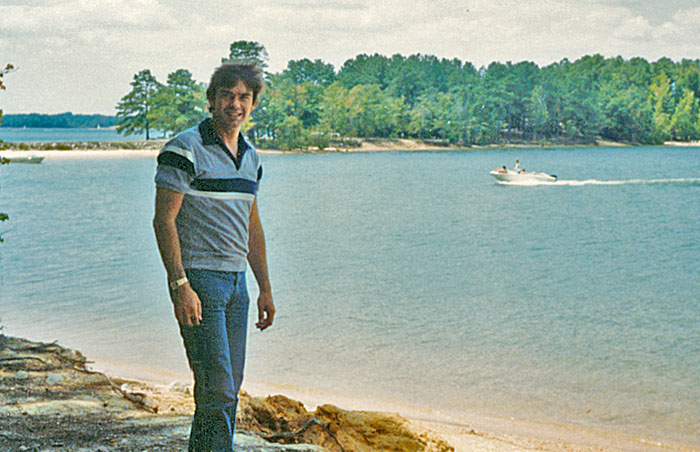

![A Purolator Courier B727-100 at Reno, Nevada in early 1986. My home [now] is on the hills at the left.](images/Orion Page/85orion03.jpg)
